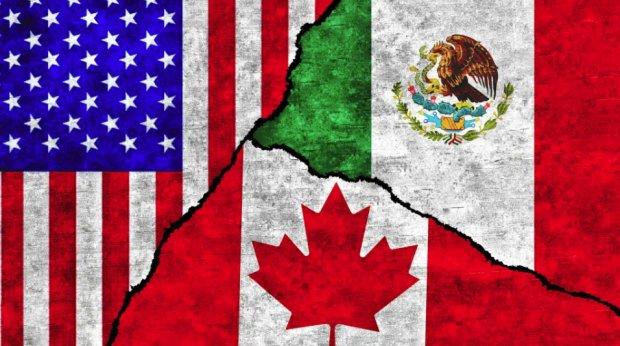How New Tariff Policies Are Reshaping Travel Across the U.S., Canada, and Mexico
Rising Tariffs and Their Effect on Travel Expenses in North America
Recent adjustments in trade tariffs among the United States, Canada, and Mexico are creating fresh challenges for travelers crossing these borders. These changes not only alter the economic landscape but also have tangible effects on travel costs and convenience. Airlines, car rental companies, and hospitality providers are all feeling the pressure from increased tariffs on imported goods and parts, which may translate into higher prices for consumers.
For instance,airlines might raise ticket prices due to increased costs for aircraft components,while rental car companies could pass on higher maintenance expenses to customers. Additionally, travelers may notice price hikes in fuel, dining, and souvenirs, especially those who frequently cross borders for business or personal reasons. Understanding these cost shifts is crucial for budgeting upcoming trips.
- Transportation Expenses: Tariffs on vehicle parts and fuel can lead to more expensive flights and car rentals.
- Lodging and Amenities: Hotels may increase rates as tariffs raise the cost of imported goods and services.
- Travel Frequency Decisions: Business travelers might reconsider the necessity of trips due to rising operational costs.
| Expense Category | Expected Impact |
|---|---|
| Fuel Costs | Likely to increase due to tariffs on imported crude oil, raising transportation fees |
| Car Rentals | Higher maintenance costs may result in increased daily rental rates |
| Airfare | Tariffs on aircraft parts could cause airlines to raise ticket prices |
Shifts in Cross-Border Shopping and Tourism Spending Trends
Tariff changes are also influencing shopping behaviors and tourism expenditures along the U.S.-Canada-Mexico borders. Many U.S. travelers have traditionally benefited from lower prices on electronics, clothing, and vehicles just across the border. Though,with tariffs increasing the cost of these goods,the appeal of cross-border shopping may diminish,perhaps reducing short-term visits focused on retail.
Consequently, tourists might redirect their budgets toward domestic experiences or international destinations unaffected by these tariffs.This shift could foster growth in local cultural tourism, dining, and entertainment sectors as travelers seek value and unique experiences closer to home.
- Decline in luxury and spontaneous purchases in border shopping districts.
- More intentional trip planning as travelers weigh total expenses.
- Increased interest in authentic local experiences such as culinary tours and cultural events.
| Product Category | Current Spending Behavior | Forecasted Change |
|---|---|---|
| Consumer Electronics | High volume of cross-border purchases | Projected decrease of 15-20% |
| Clothing and Footwear | Moderate shopping frequency | Expected decline of 10-18% |
| Tourism Services | Consistent growth | Likely to remain stable or see slight increases |
Industry Responses: Airlines and Travel Firms Adjusting to Tariff Challenges
In light of the new tariff landscape, airlines and travel companies are rapidly modifying their operations to mitigate cost pressures and maintain customer engagement. Many carriers are concerned about rising expenses related to parts and fuel sourced from tariff-affected countries. To counteract these challenges, airlines are diversifying suppliers and optimizing flight routes to reduce overhead.
Travel agencies are also adapting by revising contracts and tailoring marketing efforts to sustain cross-border travel demand despite pricing uncertainties. Enhanced customer communication and flexible booking policies are becoming standard to reassure travelers amid fluctuating costs.
- Expanding supplier networks to avoid tariff-related cost spikes.
- Leveraging technology to streamline bookings and cut operational expenses.
- Implementing flexible cancellation and rescheduling options to boost traveler confidence.
- Providing clear information on potential price changes and travel advisories.
| Sector | Immediate Effect | Company Strategy |
|---|---|---|
| Airlines | Increased operational costs | Route adjustments and supplier diversification |
| Travel Agencies | Uncertainty in pricing | Flexible policies and enhanced customer education |
| Tour Operators | Decline in cross-border bookings | Focused marketing campaigns targeting domestic travelers |
Traveler Strategies to Reduce Extra Costs Amid Tariff Changes
To navigate the financial impact of evolving tariffs, travelers can adopt several practical measures. Keeping a close eye on currency exchange rates can definitely help identify optimal times for converting money, potentially saving a meaningful amount. Booking flights and accommodations well in advance can lock in better prices and protect against sudden tariff-driven increases.
Choosing local products and services upon arrival not only supports regional economies but also helps avoid inflated prices caused by tariffs on imported goods. Additionally, packing essential items such as medications, toiletries, and electronics can prevent costly last-minute purchases affected by tariff hikes. Staying informed about tariff developments for specific destinations is also advisable.
| Recommended Action | Advantage |
|---|---|
| Book Early | Secures lower prices before tariff-related increases |
| Buy Locally | Avoids costs linked to tariff-affected imports |
| Pack Necessities | Prevents paying premium prices on essential items |
| Monitor Currency Rates | Maximizes value when exchanging money |
Final Thoughts: Preparing for a Changing Travel Environment
As tariff policies between the U.S., Canada, and Mexico continue to evolve, travelers should anticipate adjustments in costs and regulations that may influence their itineraries and budgets. Staying updated on trade developments and maintaining open communication with travel providers will be key to managing these changes effectively. While the full scope of the tariffs’ impact is still unfolding, proactive planning and flexibility will help travelers navigate this increasingly interconnected economic and travel landscape.




